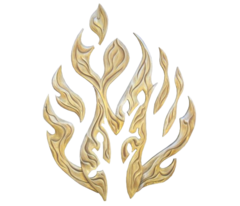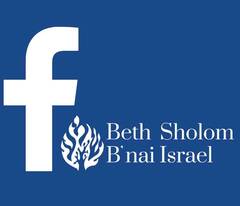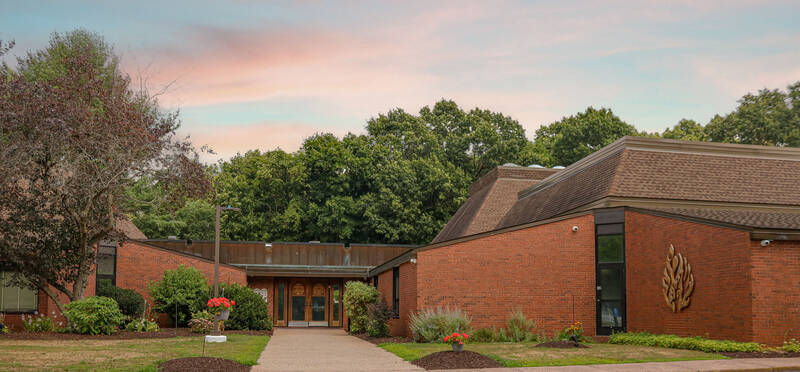Beshelach: February 11, 2017, Shabbat Shira
Shabbat Shalom.
As Miriam sang at the Red Sea, in our Parsha, and as Moses sang the great Shirat HaYam, this Shabbat has music at its core. Not surprisingly, the Haftara for today is also a song of victory, the Song of Deborah after the great victory over the Canaanite city of Hatzor.
The calendar even sings this week. Judaism does not mark the end of winter with a groundhog; the Rabbis looked to the almond trees, the first to bloom as an indication that winter was coming to an end. Today is Tu B’Shevat, the 15th day of the month of Shevat, also known as the New Year for Trees. It is a day that we look forward to the return of the songbirds to the northern cities. In Eastern Europe, children would leave breadcrumbs out for birds to promote even the songs of nature at this time of year.
Rabbi Shira Ainsfeld wrote this week, “Shabbat Shira speaks to the same principle of renewal. The Hasidic master, the Sefat Emet, draws a connection between the Song of the Sea and the verse from Psalms: “God has placed in my mouth a new song.” What is the meaning of this “new” song, he asks? “It means that there is a song in us that will always be there, that has and will always have the power of renewal. It is in our souls and it can never be forgotten. This is the deliverance that is there for every generation.”
This is also the season of song here in our congregation. I hope most of you have heard that we are looking for someone to enhance the music of our services. Synagogues call the Music Director of the congregation a Cantor but that terminology carries with it a lot of baggage. What does it mean to hire a Cantor today and what kind of a Cantor would meet the needs of a modern congregation?
The answer is even more complex because congregations do not grow at a steady rate. Each generation of Jews find the answers they are looking for from our tradition and set everything so that our services meet all of their needs, in music, in tradition, in length and in content. But just as we get it exactly where we want it, a new generation comes along and wants to reset everything.
One of the sure signs that one is getting old is to discover that the music you love so much is now being played on the Oldies station. You know it is really bad when you start recognizing what is being played in the background on the elevator. I was at a Super Bowl party last weekend and some of the people there noted that they didn’t understand many of the commercials that were being aired during the game. Sadly, I noted that those commercials were not being pitched to me or my generation. I am no longer in the 18-35 demographic that advertisers are looking for.
Jewish music, especially liturgical music has many of the same challenges. For the last 15 or 20 years, Jewish liturgical styles have changed radically. The needs of Jews coming to pray is changing. Some of the changes are theological. People today are looking to find God in their lives. When I first started paying attention to sermons as a child, a Rabbi would almost never mention God. Today, a Rabbi who can’t talk about God will never speak to the hearts of his or her community. Some of the changes are cultural. My parents would never think to attend a Shabbat service unless dressed in a suit and tie or a skirt or dress. Today worship does not depend on how we dress. We live in a “come as you are” generation.
Our services today are different from past generations in many ways. By far, the most important change is that our services are no longer for spectators, but they strive to promote full participation by the congregation. What actors call “the fifth wall” (four walls hold up the roof but the fifth wall separates the actors from the audience) has been broken down. I have been at plays where the actors walk out into the audience. I have also been at plays where the audience sits on the stage. In many congregations today, people not only sing all the liturgical melodies together, but they clap their hands, put their arms around each other and they get up and dance to the music. Yes, it does at times remind one of a revival meeting of some evangelical movement, but instead of watching the words move someone else, we are the ones being moved.
The Hasidim of the 17th and 18th centuries refused to sit still in prayer. They danced around the sanctuary, they swayed to the music, they clapped hands and stomped feet in time to the singing. They banged on tables and they kept on singing the melodies long after the words of the prayer ran out. They quoted the book of Psalms to justify their joy, using a verse found in every siddur (including our own on page 105) “As David sang, “Praise Adonai, my soul; let every fiber of my being praise God’s holy name.”
Over the course of the 20th century, American taste in music changed. Jazz gave way to big bands. Big bands gave way to the crooners. Crooners gave way to Rock and Roll. Rock and Roll gave way to Disco. Disco gave way to Techno music. Techno music gave way to Rap. Rap gave way to Hip Hop. The music did not change all at once. Each genre melded the style that came before in new and interesting ways. Jewish music has evolved in a similar manner. The eastern European music that came here with the great immigration of Jews in the 1880s through 1920 began to pick up American styles. The first movie with a soundtrack was the Jazz Singer, a story of a Cantor whose son begins to experiment with the new American sounds. Just a couple of years ago I found music for Adon Olam from the movie “Pitch Perfect”. Today congregations have already begun to sing Adon Olam to music from Hamilton.
I am not sure if the names of those promoting modern liturgical music are well known today, but their music has changed the way we sing our service in many ways. Rabbi Shlomo Carlbach who gave us a new Kabbalat Shabbat; Debbie Friedman who gave us new melodies for many prayers most notably Havdala and the Mishebayrach we sing here. There is Safam, Craig Taubman, Rick Recht who are all busy creating music for Jews to sing. Out of Israel, there are many new artists who have won international acclaim for their liturgical work. Cantor Shefa Gold has thousands of new chants that can be found on her website. All of them making it possible for all of us to sing in prayer together.
So don’t be surprised if the next person hired to lead services does not stand up on the pulpit and give a concert. Don’t be surprised if he or she comes down and walks down the aisle encouraging each of us to sing out, loud and proud, the liturgy we know so well. What it takes to be a Cantor today has changed, and it has changed in response to the needs of communities who are looking to make their services more spiritual and to attract the next generation of Jews to come and pray. Just as all of us work so hard to create a service that speaks to our needs, so too, today’s Cantors try to create a spiritual atmosphere that will attract the next generation of Jews to come and pray.
We are not looking for someone who will be a throwback to the past generation of spectator Judaism. We are looking for a Cantor who will be pretty much like the Rabbi, one who will engage us in being a part of this amazing tradition we call, Judaism.
May God help us find the musical guide to help unlock the spiritual potential within each of us so that we can find for ourselves the holiness in the words we sing as we say …
Amen and Shabbat Shalom
Sermon given by Rabbi Randall Konigsburg at Beth Sholom B’nai Israel on Saturday, February 11, 2017.




